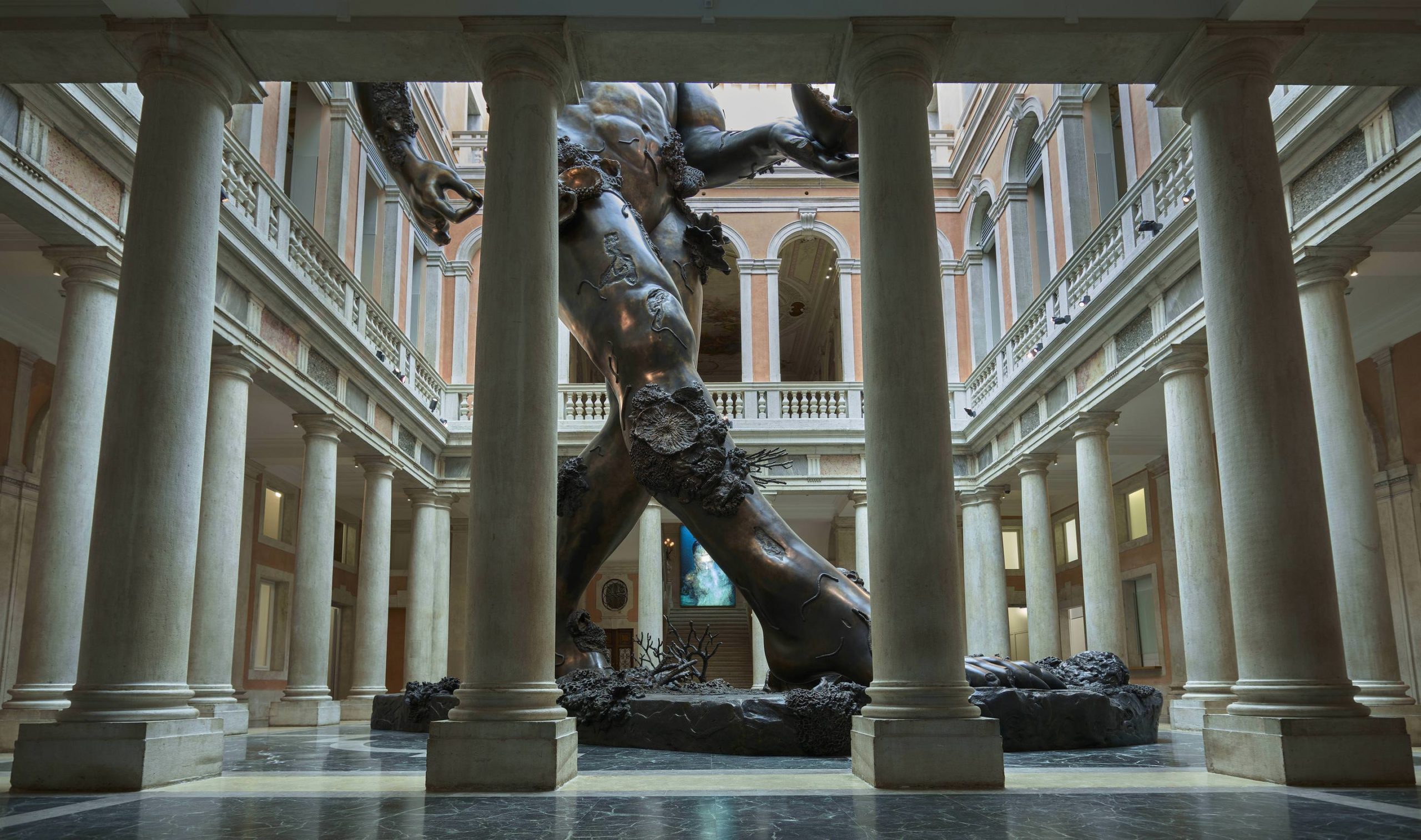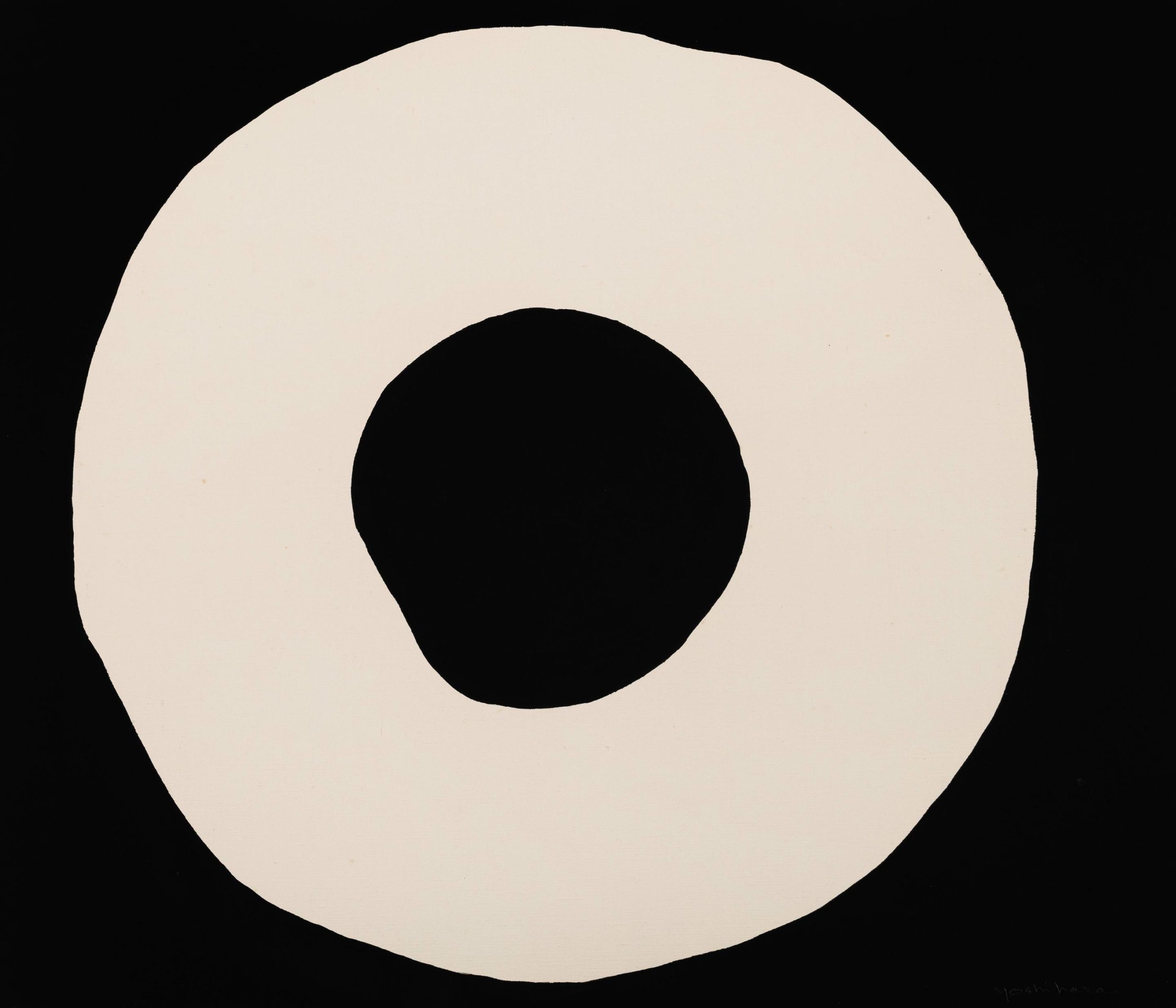This spring, Pirelli HangarBicocca is showing Eva Kot’átková’s “The Dream Machine Is Asleep,” curated by Roberta Tenconi. The Czech artist created an immersive project of sculptures, objects, collages, installation, and performance. Kot’átková investigates the human body as a machine, and the act of dreaming as a way to envision and visit parallel worlds.
Tenconi spoke with Whitewaller about the artist’s interest in the inner workings of the human mind and spirit.
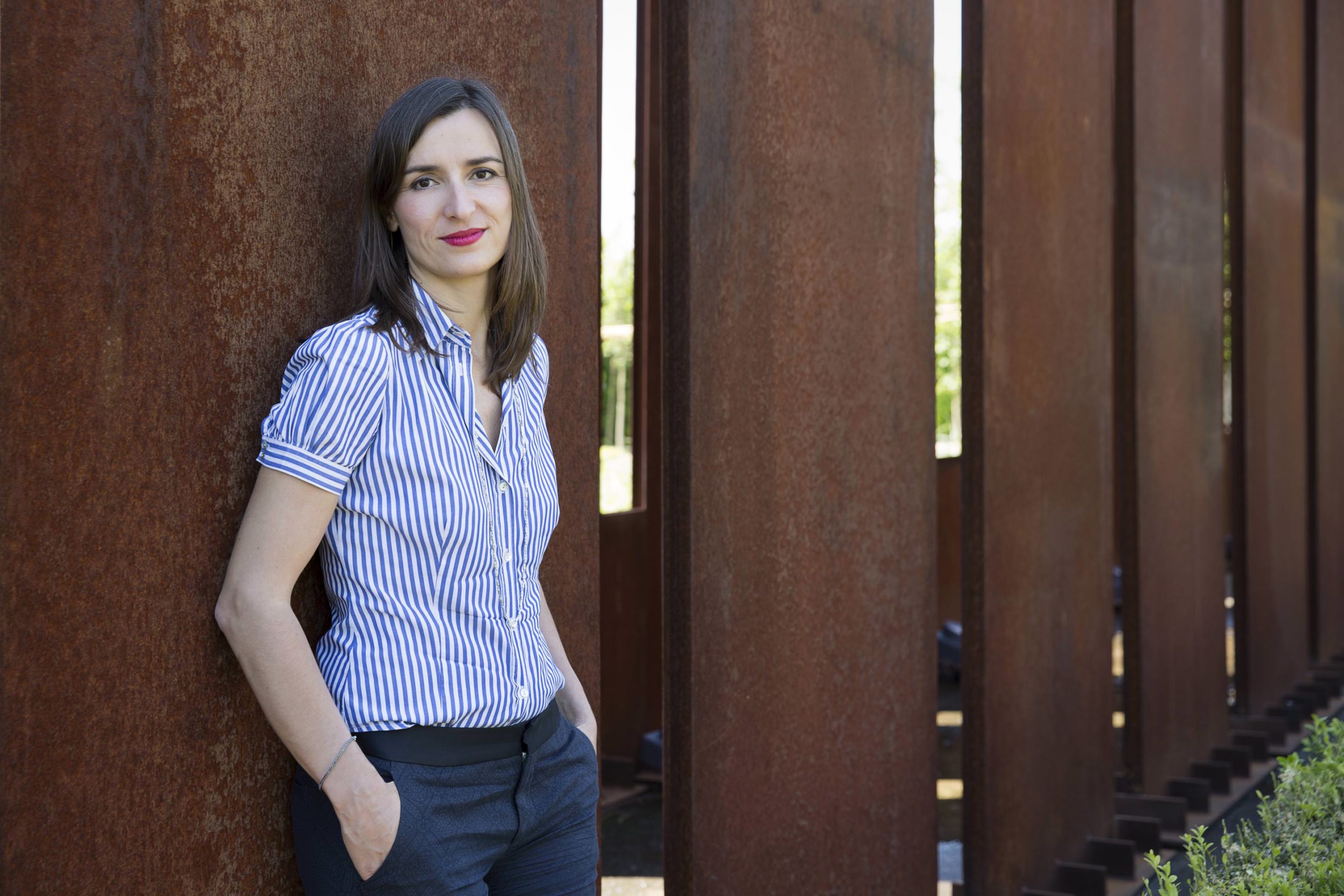
Courtesy of Roberta Tenconi.
WHITEWALLER: What was the starting point for “The Dream Machine Is Asleep”?
ROBERTA TENCONI: When we started discussing the exhibition project, Eva had just presented a complex and beautiful video and installation titled The Stomach of the World, and we both thought this could have been a beautiful start for the Milan show. Though in the development of the installation we changed into blue the color of the stomach-tunnel structure inside which the film is projected (to recall the atmosphere of the show and the state of sleeping), the piece touches on some topics further developed in the show and really works as a great introduction to Eva’s universe.
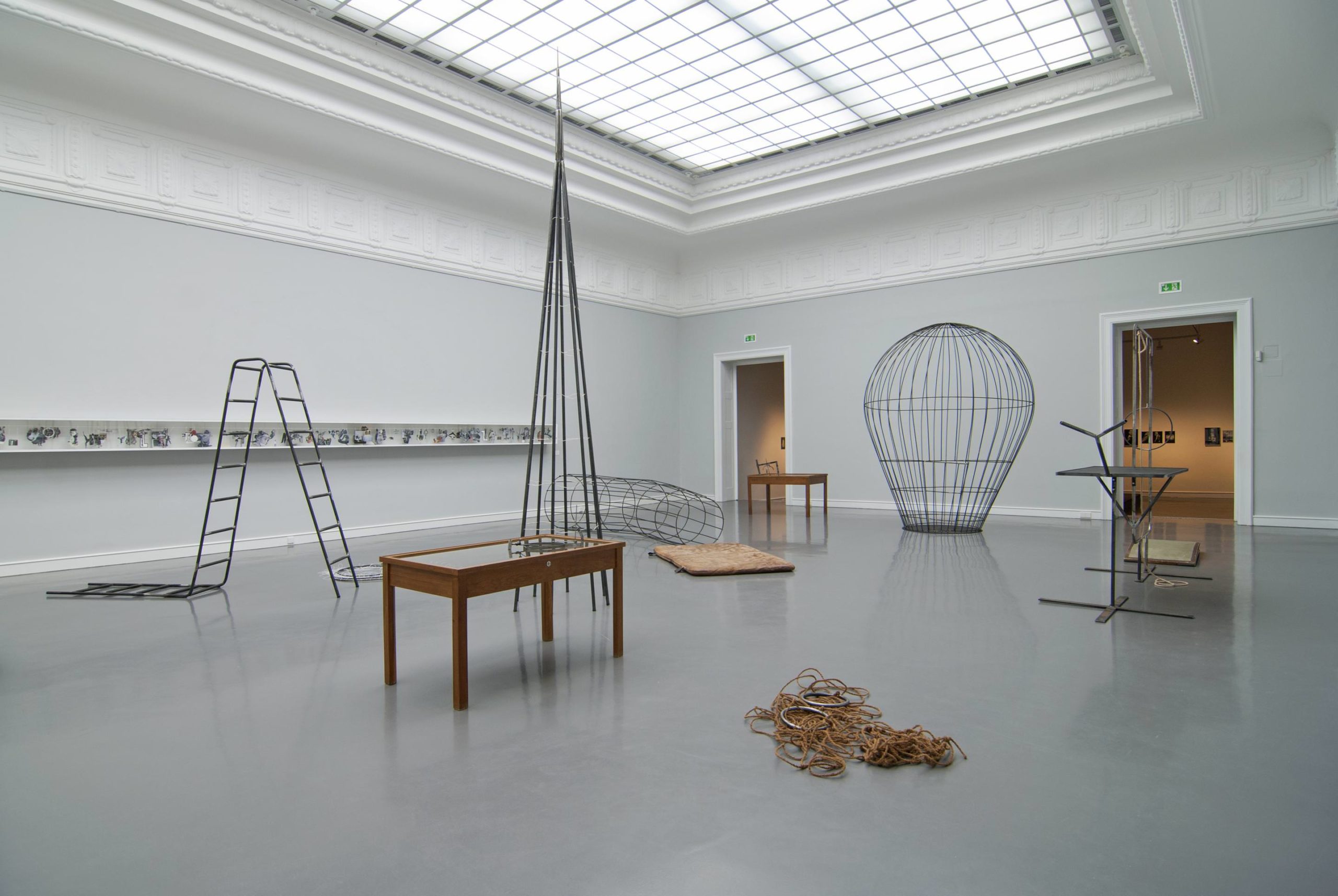
Eva Kot’átková Architecture of Sleep, 2014 Installation view, Kunsthalle Baden-Baden, 2014 Courtesy the artist and Meyer Riegger, Berlin/Karlsruhe Photo: Michael Belogour
The world is seen here through the metaphor of a stomach, a chaotic organism that works as a machine—alternating between processes of ravenous assimilation and moments of stasis, empathy or clashes between its inhabitants, and periods of control, digestion, expulsion, and recycling of the “waste” produced—and whose survival and perfect functioning is ensured by the work and care of few individuals that cooperate together.
WW: How did Eva Kot’átková become interested in dreams?
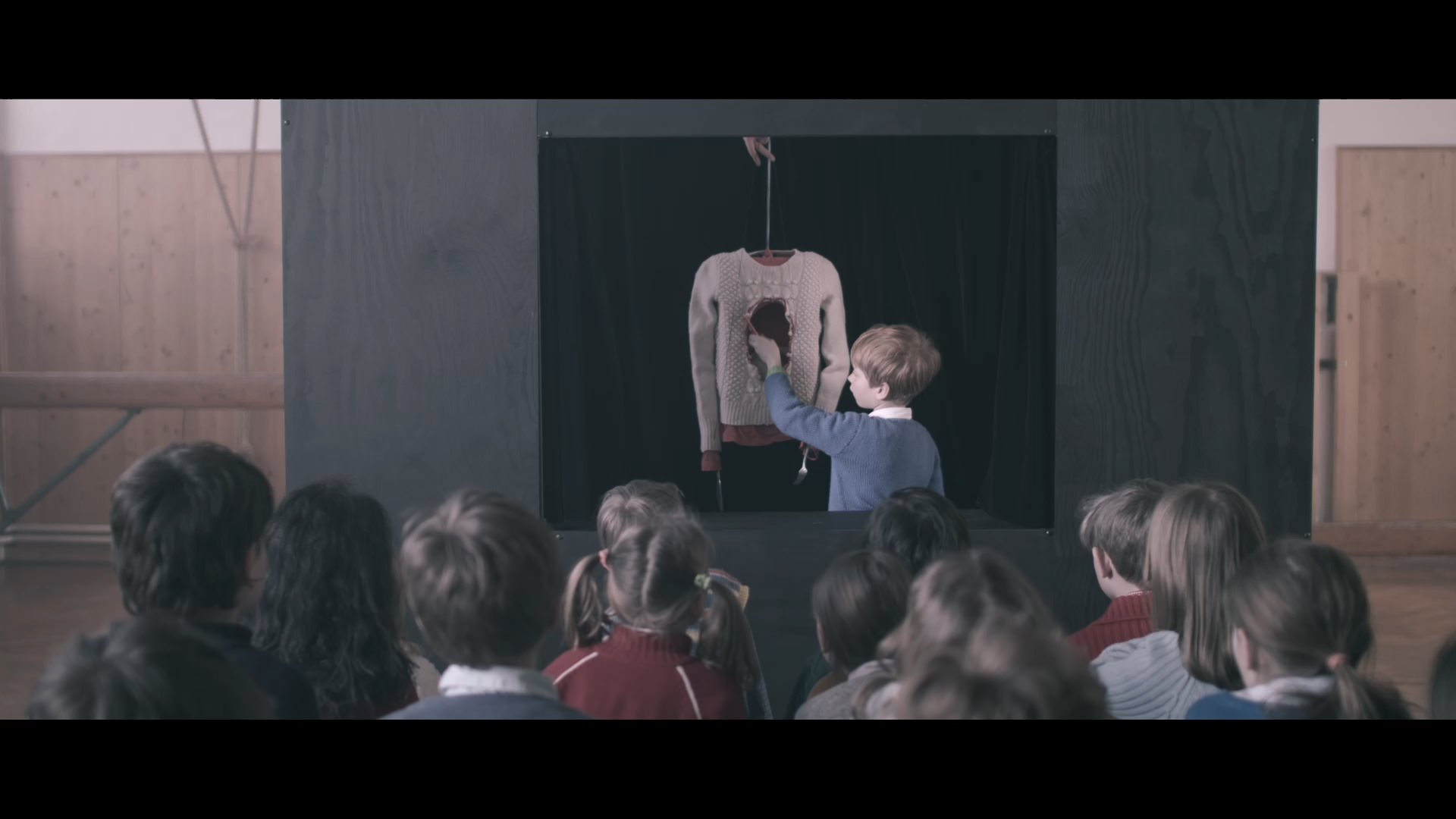
Eva Kot’átková Stomach of the World, 2017 Video still Courtesy the artist and Meyer Riegger, Berlin/Karlsruhe
RT: Eva has always been interested in the idea of the body as a machine, how it functions and how it could be fragmented. But this is actually the first time she is investigating the realm of dreams, what happens when the “machine” is asleep. And what becomes clear in the show is that the machine actually never sleeps . . . it still functions, though in a different way, and sometimes it might require some help.
It also comes as an almost natural consequence of her research so far: Looking at the previous works and her examination of all such forces that could influence our behaviors—both belonging to social and institutional rules and conventions as well as coming from inside as our fears, anxiety over unattended expectations—the act of sleeping becomes a moment for regeneration and rest, but also for our fantasy to create inner and alternative worlds. Together with Eva, we were talking to a neurologist, a specialist in sleep disorders, and he actually confirmed that newborns have the most vivid and important dream activity; while growing up and becoming adults, our capacity to dream decreases. It is like we begin experiencing life, and the real world, by dreaming!
Eva has always been very much interested in literature and fiction, and so this idea of creating alternative paths and inner stories perfectly matches with the vision and focus of the show.
WW: How does she explore our inner thoughts, visions, and dreams in her practice?
RT: Eva’s work has deep roots in art history, in particular in Dada and Surrealism, certain Czech cultures such as the Black and puppet theater traditions, but also into literature and philosophy—her father is a philosopher and fiction writer, and the artist has very often stressed the fact that he has been a key figure for the development of her practice. In telling stories, she always prefers a nonlinear, fragmented way of narration and through this really envisions our innermost thoughts. The use of collage and the idea of putting together different elements is also a way to give shape to parallel worlds and provide alternative ways of thinking. She makes incredible drawings, but so far she has barely shown them!






